The turn of any year triggers contemplation and the setting of fresh agendas for the 12 months to come. But this arbitrary annual exercise feels much weightier when it’s also the turn of a decade. It’s probably down to our odd habit of discretely sectioning history into neat little ten-year chunks, but the arrival of a new decade seems to implicitly entail a radical rethink in how we relate to the world. Faced with the daunting open horizons of the 2020s, a decade plagued by political and environmental uncertainty, London’s designers seem to have sought refuge in the fixed nature of the past in order to present their visions of how tomorrow might look.
Though ostensibly cast in a bleak, apocalyptic future, the air at Charles Jeffrey was thick with a primordial energy. At one end of a barrel-vaulted hall stood a wizened tree, dressed ceremonially with blank CDs as if it were of ancestral significance. At the centre of the room stood a plinth, on which models performed a ritualistic dance under strobes to booming techno — a clear extension of the hedonistic flair that makes up the brand’s core. But there was something more ritualistic this time around, with lightheaded revelry supplanted a sense of duty and urgency. Where Charles’ Loverboys once danced until the sun came up, here there was a looming sense that it may never rise again.
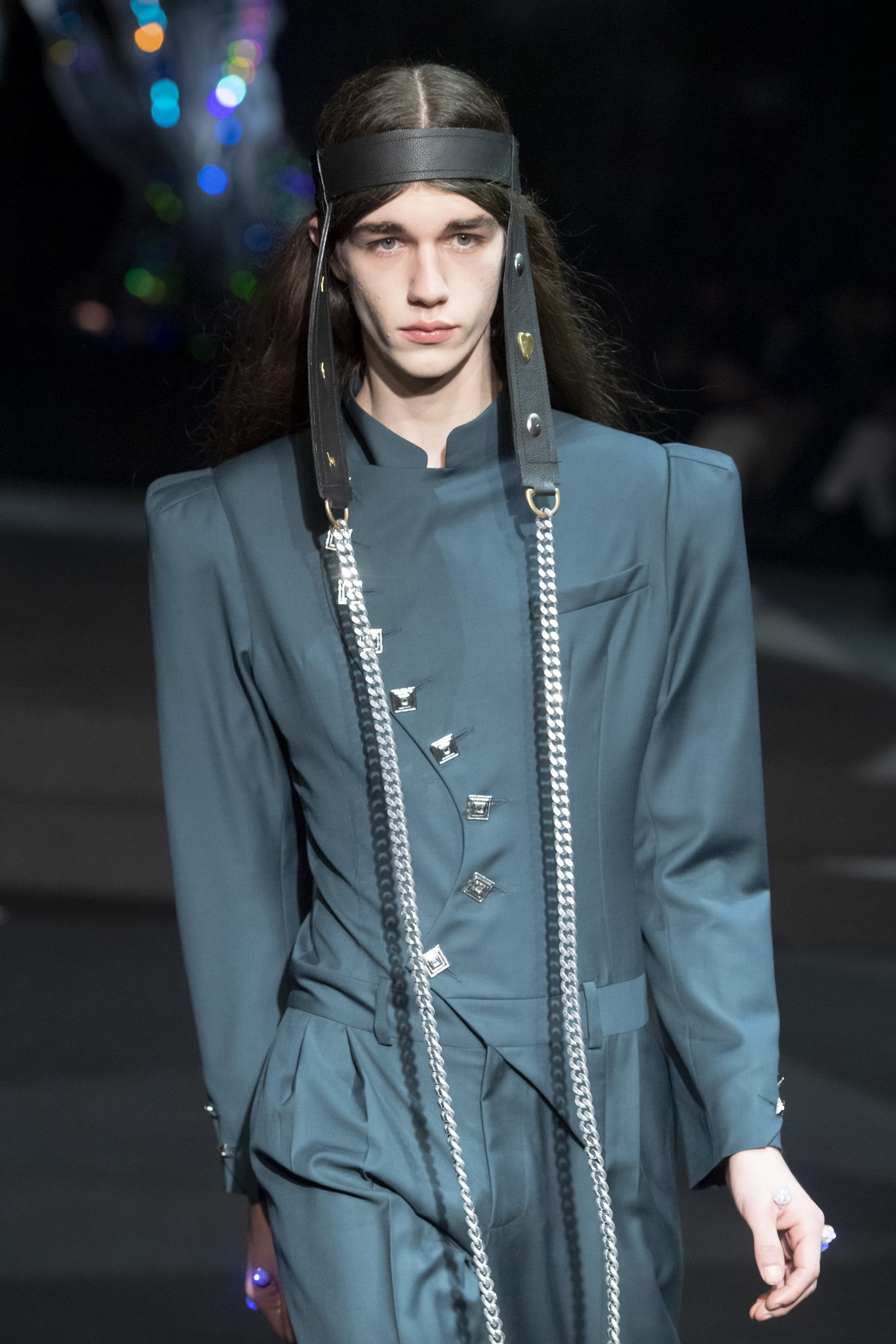
This pressing sincerity carried over into the clothes. The attendees of this brooding bacchanal wore the most serious garments we’ve seen yet from the Scottish designer, drawing heavily on militaristic and equestrian codes. A tailored teal jumpsuit with subtly puffed shoulders showed that the designer has upped his cutting game, while also adding a broad-shouldered muscularity to the Charles Jeffrey lexicon. Rather than come off as jockish, this new direction symbolised the brand’s fresh, mature perspective, equipping it to face the gravity of the issues at hand.
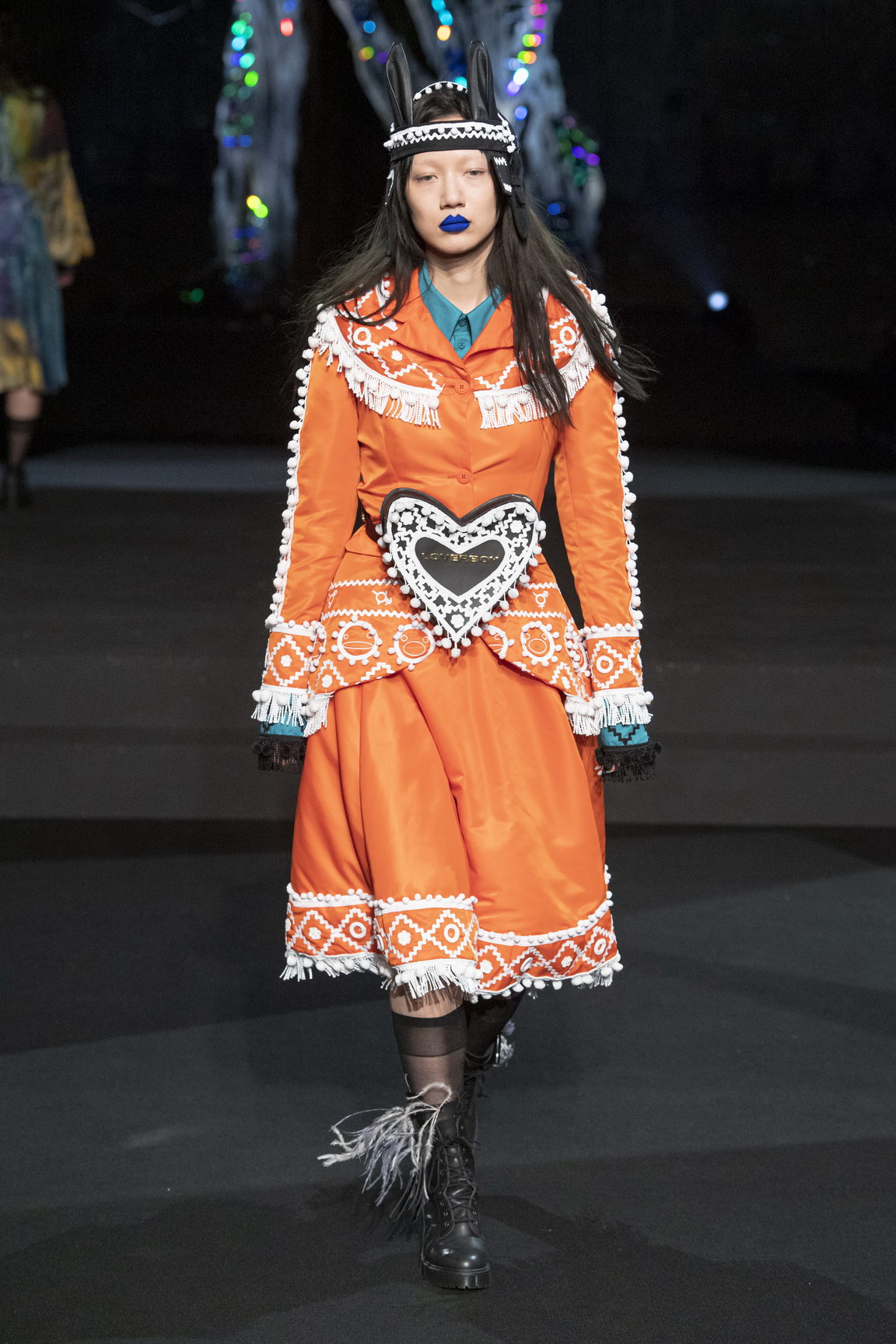
Bridle-like headpieces and horse brasses invited viewers to draw links between the strength implied in the clothes and that of a workhorse, with source material for the equine inspiration being the Festival of the Horse, a yearly tradition on the Orkney Islands. In it, “the young compete in the ritual ploughing of straight lines and parading of exquisite, lovingly-made, costumes,” read the show notes. “In their own way, they pay homage to humankind’s ancient bond with the animal world.” The legacy of these costumes translated to embroideries and knits, but the potential rigidity of working with techniques mired in tradition was tempered. Illustrated characters seen in previous collections featured in the embroidery, discreetly bordered by the gender symbols used to express genderfluid, genderqueer, non-binary and transgender identities. A subtle statement, yes, but a powerful one, positioning progressive politics at the heart of the brand without needing to shout about it.
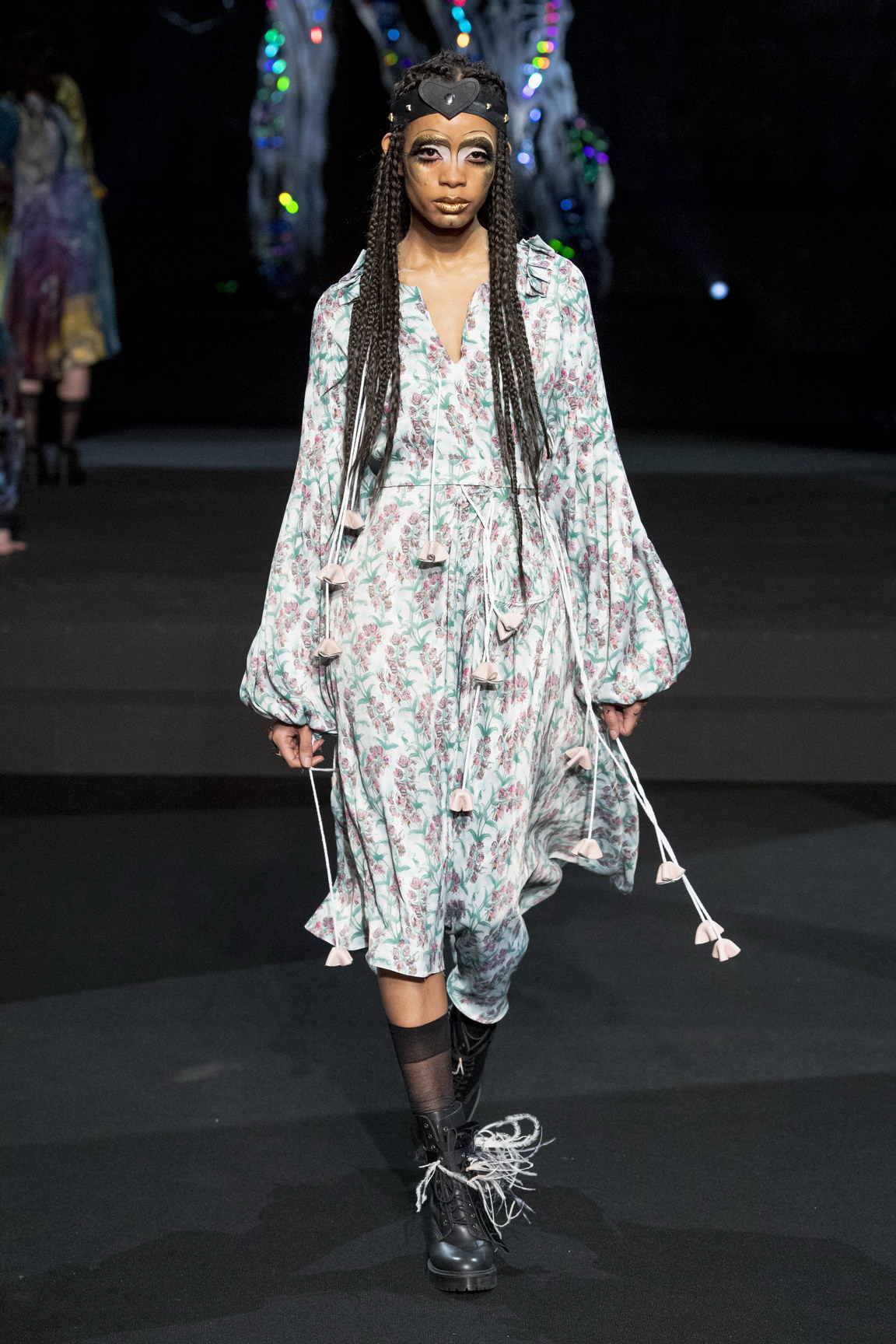
The toughness implied by sailor collars and thick tartans was counterbalanced by a lighter, more sensitive energy. Voluminous bias-cut dresses in meadowy hues were printed with drawings of flowers inspired by the work of Margaret Macdonald Mackintosh, lending a spritely air. There were also while heart-shaped ruffles and cut-outs in tailored pieces, and giant tulle-layered skirts gave the collection a spray of hopeless, mystical romance — a definitive Charles Jeffrey hallmark. In combination with the sterner looks, Charles’ message for AW20 quickly becomes clear. There’s little ambiguity clouding the fact that the path that lies ahead to tread will be rocky, and that the challenges that await us along it are arduous. As we gear up to face them, toughness and strength will, of course, be required, but just as crucial is a prevailing sensitivity and an attunement to the world around us.
In general, it was a collection that, despite its primeval setting, felt urgently of the moment. As fantastical as its recourse to tradition may seem, it was a call to take action to combat the inherited crisis we currently face. Charles Jeffrey “has always been about excess; fun-filled escapism from the banality of everyday life,” read a ‘Manifesto for Conscious Practice’ distributed along with the release, “but there are aspects of the everyday that we as a brand need to take a closer, more honest look at.” As we enter a decade where the outlook for how the world could look at its end is more pessimistic than it’s ever been, Jeffrey’s proposal marks the 2020s as a period of awakening to the challenges we face, ones that require an approach as tough as it is delicate if there’s any hope of them being resolved.
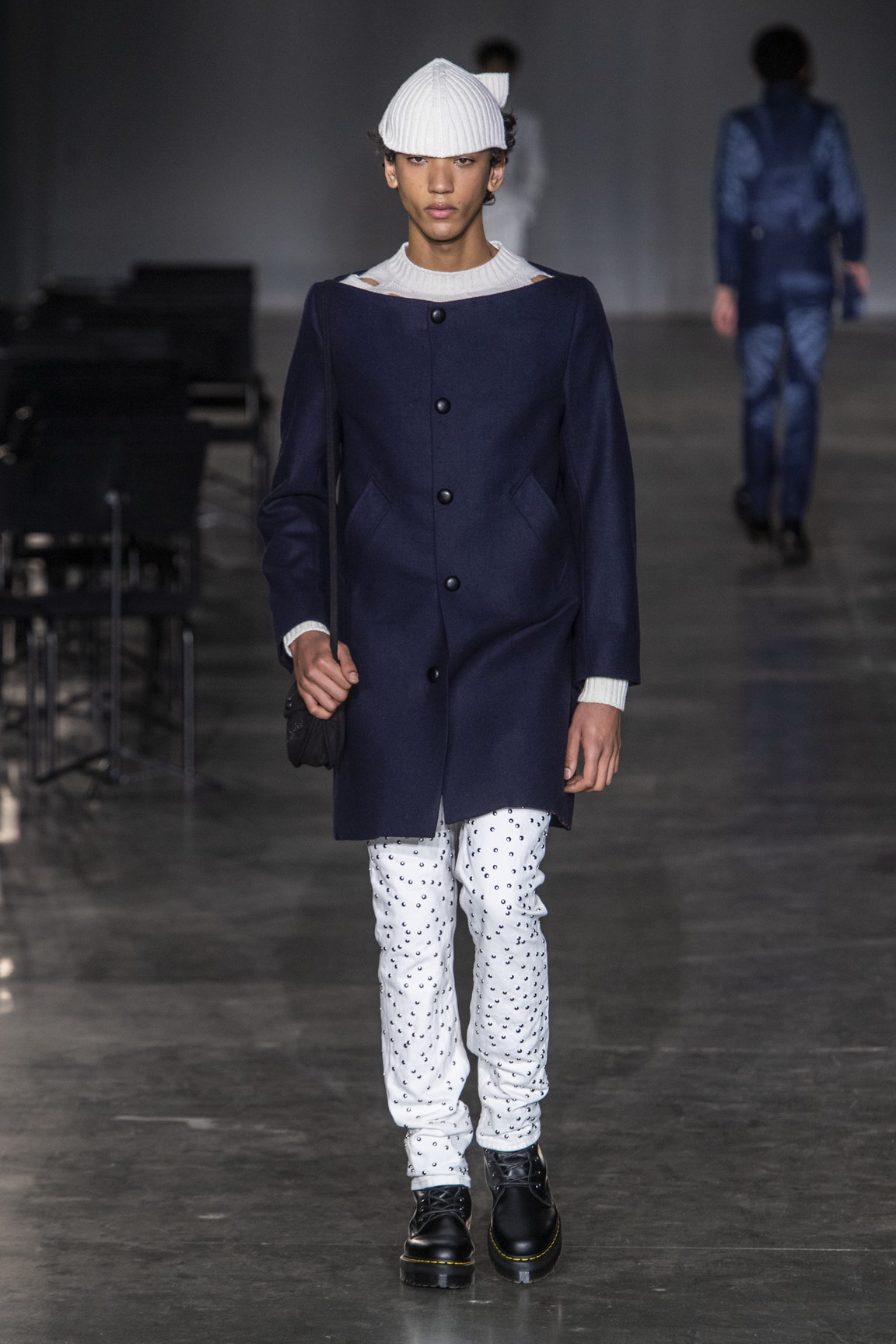
The title of Stefan Cooke’s AW20 collection, ‘The End’, implied a similarly ominous apocalyptic energy at first glance. Rather than gesture towards impending doom, however, the designer duo behind the brand seemed to take the turning of the decade as the end of a proverbial adolescence and the beginning of a new phase of maturity — and with it a whole new wardrobe of nostalgically romantic clothes. The exercises in artisanal experimentation of the work they put out during their Fashion East days was pared back — but not, it should be noted, eliminated — with a renewed focus on making irresistibly elegant, wearable clothes. Silhouettes were simple, with an accent placed on intelligently reinterpreting staple garments, a method that hearkens all the way back to the digitally-printed trompe l’œil denims and leathers of Stefan’s 2017 CSM graduate collection, or last season’s corset lacing on a blazer front.
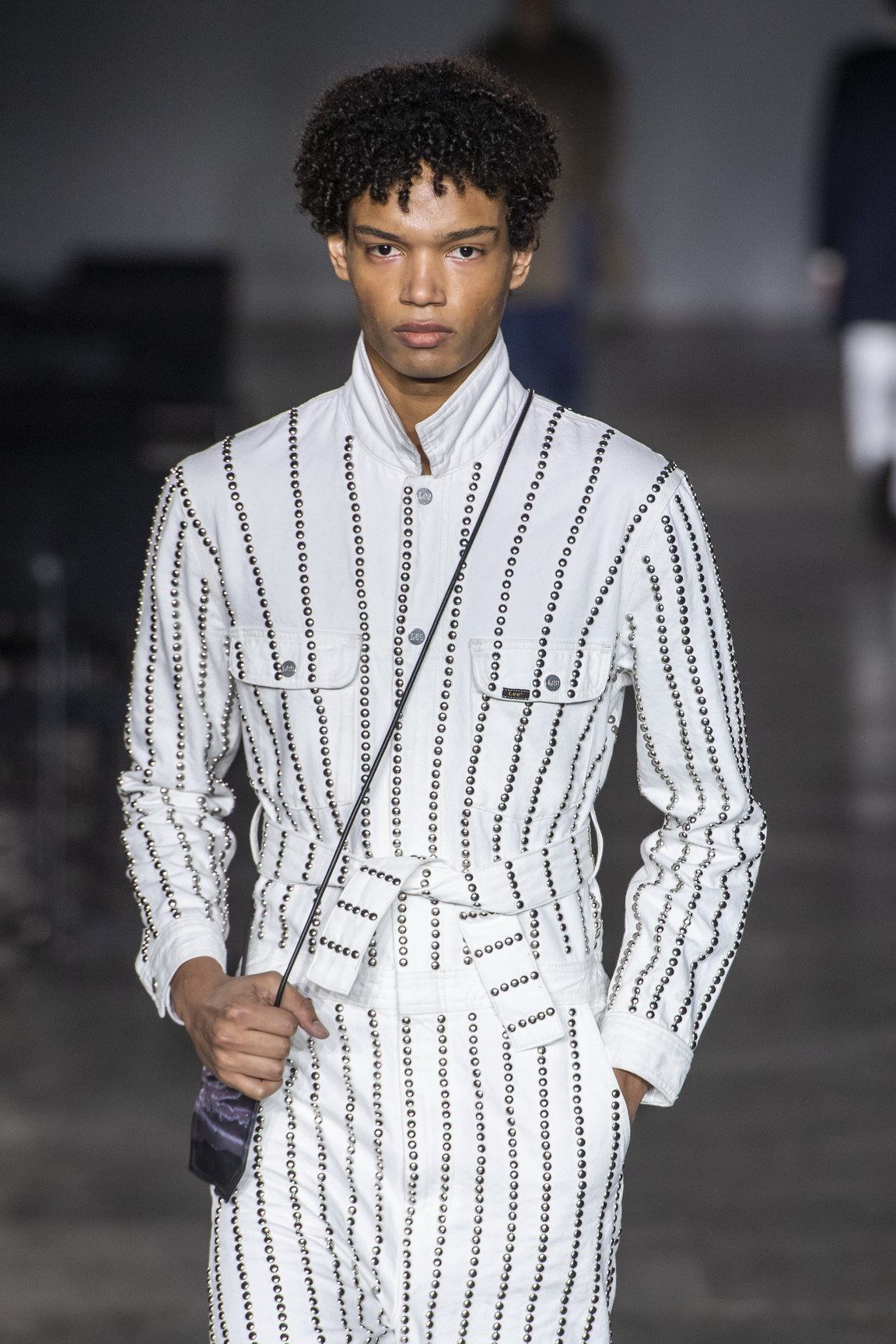
This season, denim prints graduated to real pieces in the fabric, thanks to a collaborative venture with Lee Jeans. The brand’s ethos of experimentation naturally prevailed, with jackets and jeans laser-etched to mimic acid wash as well as a harlequin pattern, a perfect marriage of Lee’s denim-making heritage and Stefan and Jake’s flair for employing cutting-edge techniques to classical effect. Studs and rivets expressed this, too — rather than serve their functional purpose, they were spangled across indigo-dyed jeans like stars across a night sky, or neatly arranged in rows and argyle patterns.
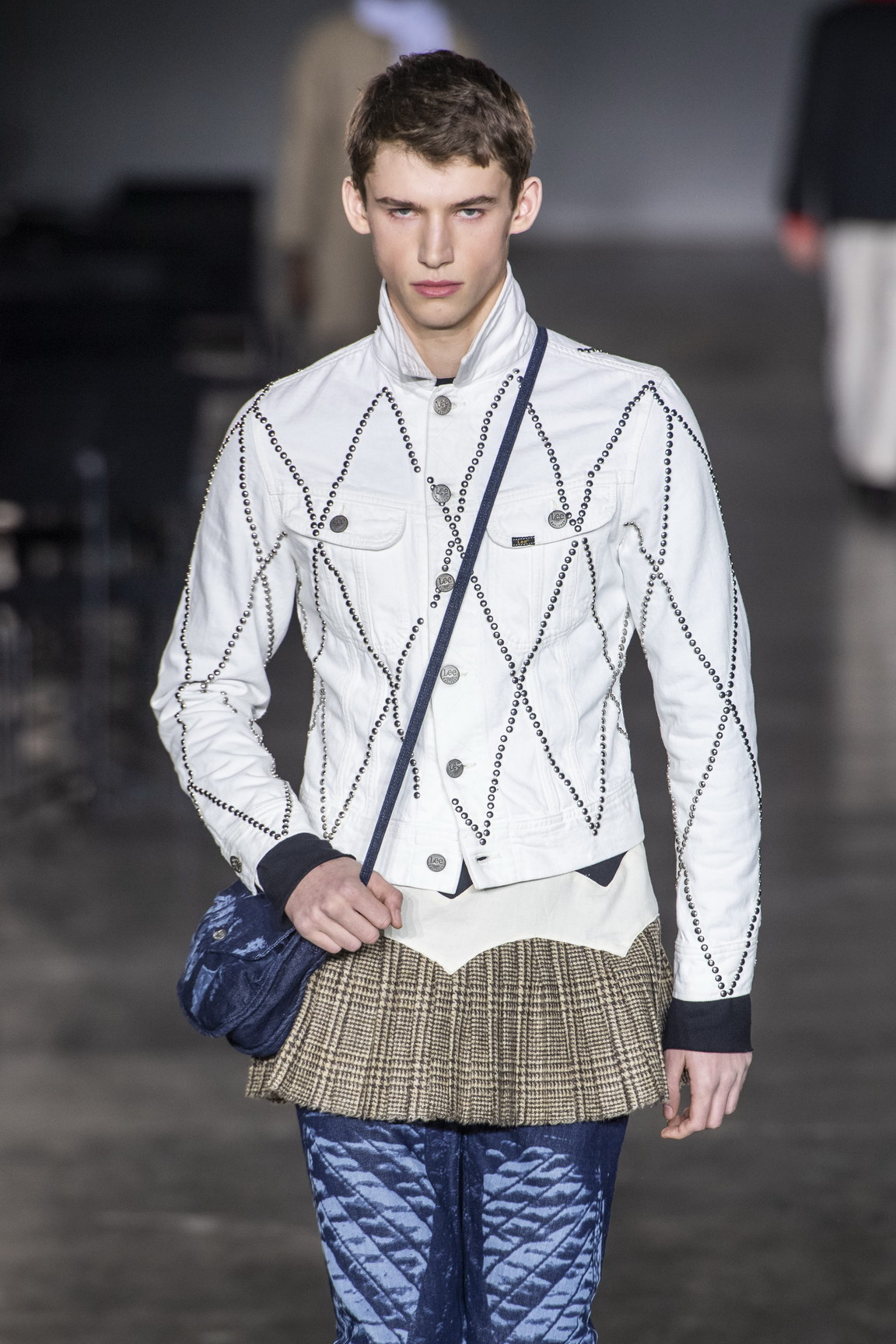
Elements that you might more readily associate with womenswear were confidently scattered throughout the collection. Navy wool and shimmering tweed coats were given horizontally slashed bateau-necks, offering a peek of décolleté — a modern masculine take on the sepia-toned grace of debutante’s gown. And mini-kilts were layered over spray-on jeans. It’s clear that the man Stefan and Jake design for is proudly ambivalent when it comes to his gender expression, unafraid to integrate aspects from his mother’s or sister’s wardrobes in his everyday dress. That’s not to say that they shy away from decidedly masculine staple: two-tone hybrid wool trousers were given cargo pockets, for example, with broad flaps that called schoolboy shorts to mind.
If Charles Jeffrey’s collection was an impassioned call to arms for the decade ahead, then Stefan Cooke’s was a discreet invitation to reflect on the wealth of the heritage we’ve amassed so far. Reacting to the seemingly relentless pursuit of ‘newness’, the brand made a point of demonstrating the transformative beauty that can come about when we stop to rethink things we were sure we already knew.

At Martine Rose, reinvigorating past classics to create a wardrobe for today was also top of the agenda, though rather than turn to old-world glamour for inspiration, the London-local designer mined her extensive archive. Pieces and looks from previous seasons returned in new guises: the comical bouffant wigs, inspired by Kinky Gerlinky clubbers, were translated to a jacquard denim, with portraits of SS20’s models appearing on jeans and jackets. The brand’s iconic wrapped blazer was lengthened into a dress, part of the brand’s notably expanded womenswear offering, and Martine’s quirky take on traditional shoemaking was yet again on show, with high-high leather cowboy boots and classic dress shoes and loafers mounted on angular cut-out soles.
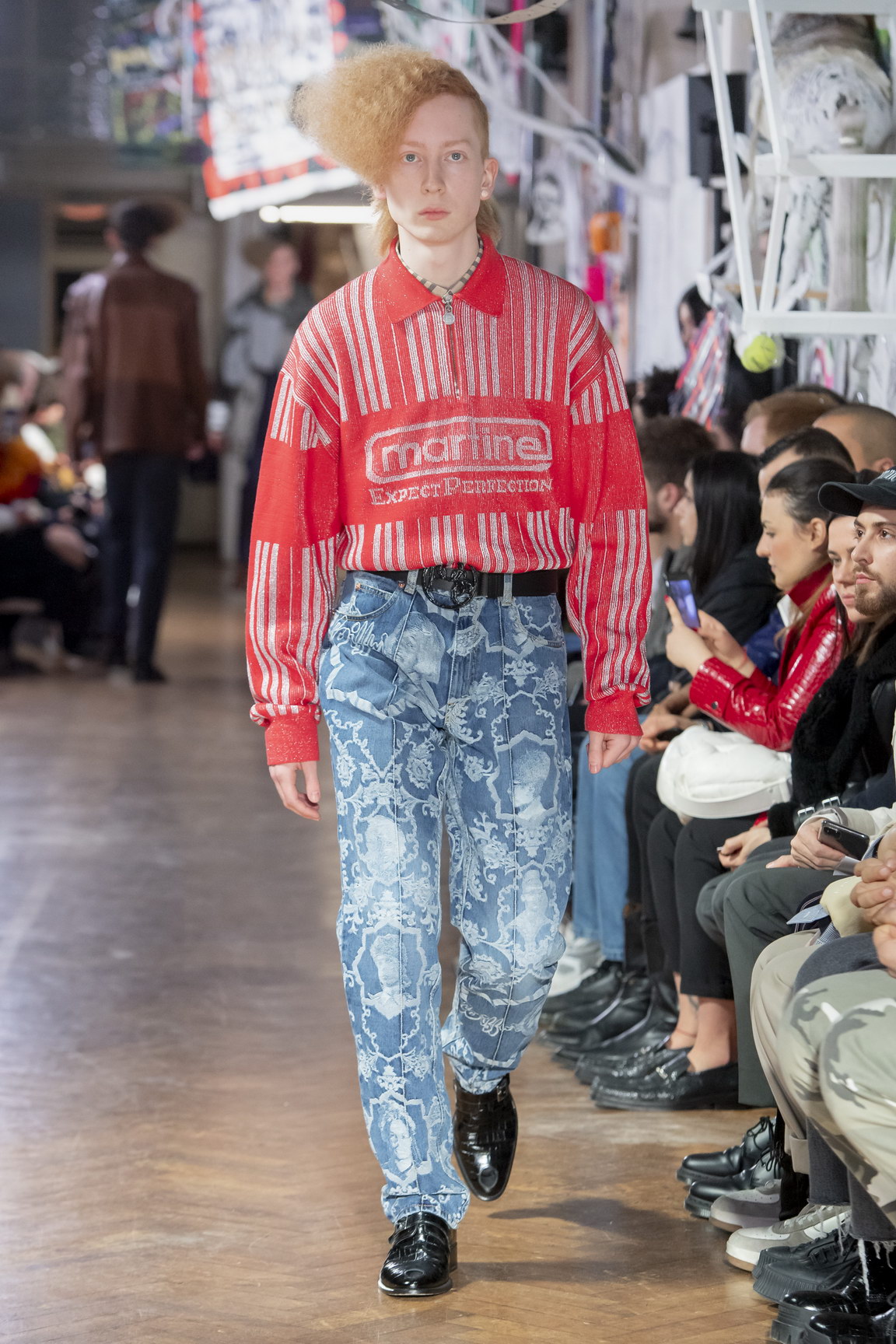
Trademark-law-teasing label-hacks made a proud resurgence, too — the most notable being the smirk-inducing glitter lurex tops emblazoned with ‘Martine. Expect Perfection’ in Durex logo-style lettering. Contributing to the feeling of retrospective nostalgia was another jacquard fabric, this time featuring the names of London neighbourhoods close to the brand’s heart, from Tottenham to Clapham to Ladbroke Grove.
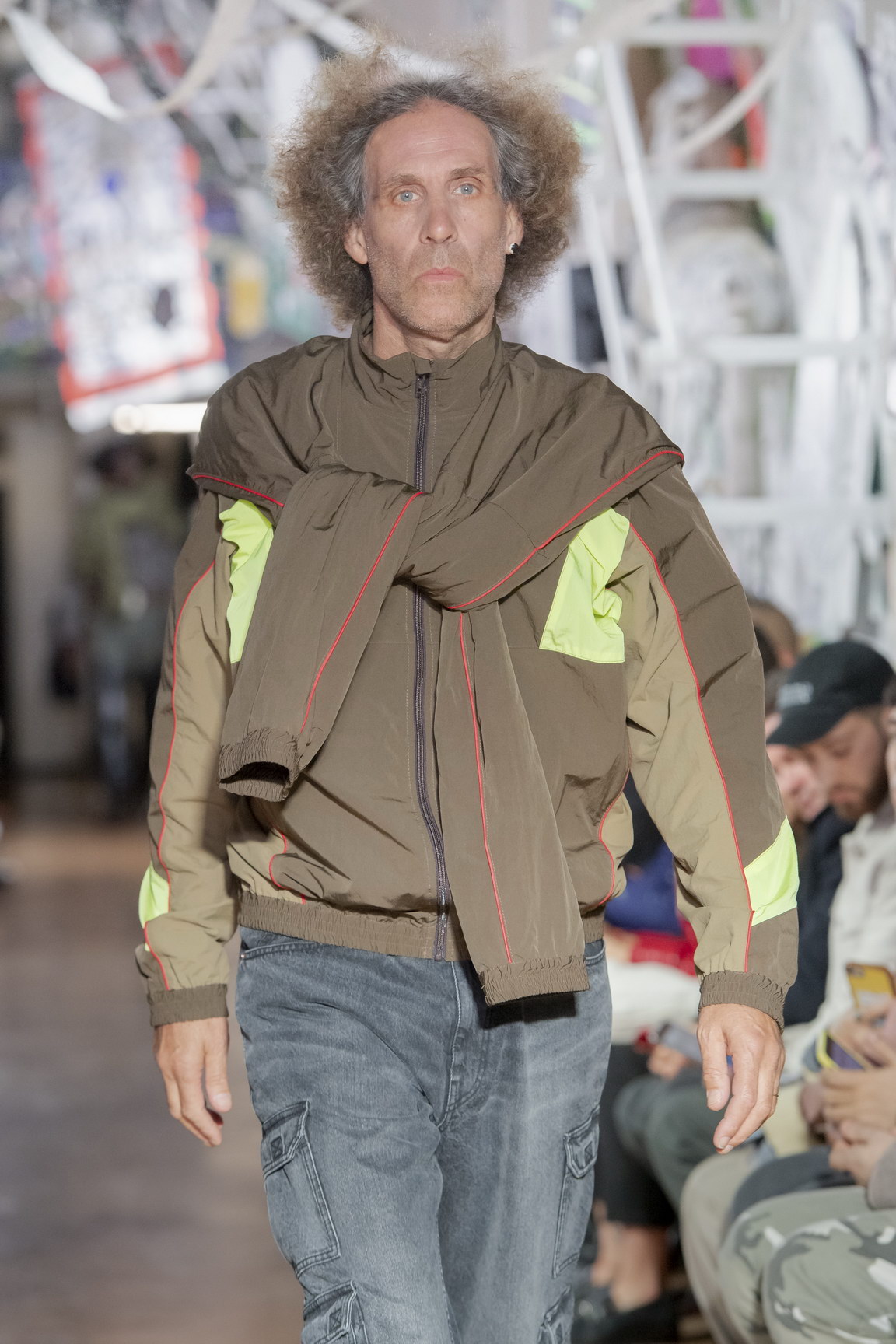
For all of the introspection and archival reissuing the collection entailed, the designer’s gaze remained as trained on what lies ahead as ever, particularly where details were concerned. Take the sporty windbreakers and quilted leather jackets as cases in point, both of which had extra sleeves extending out of the back yoke. Tied around the wearer’s front, it read like a tongue-in-cheek take on a golf-playing gentleman with a sweater insouciantly draped across his shoulders, while jumpers worn as scarves — and which, according to the show notes, “refuse to be worn any other way” — smacked of a sloppy teenager who’d given up halfway through getting changed.
Such humorous quirks are always to be expected from the designer, but the collection wasn’t without a certain severity. We saw meticulously cut leather jackets and biker trousers, while wipe-clean black latex tailoring — trousers, a wrapped-blazer dress, a buckled skirt — implied a harder, darker edge than seen before. It’s a known fact that asking ‘Would I have sex with that person?’ has always been driving part of Martine’s process when developing the Martine Rose man — AW20, then, could be thought of as a proud declaration that it won’t be taken off the table any time soon.
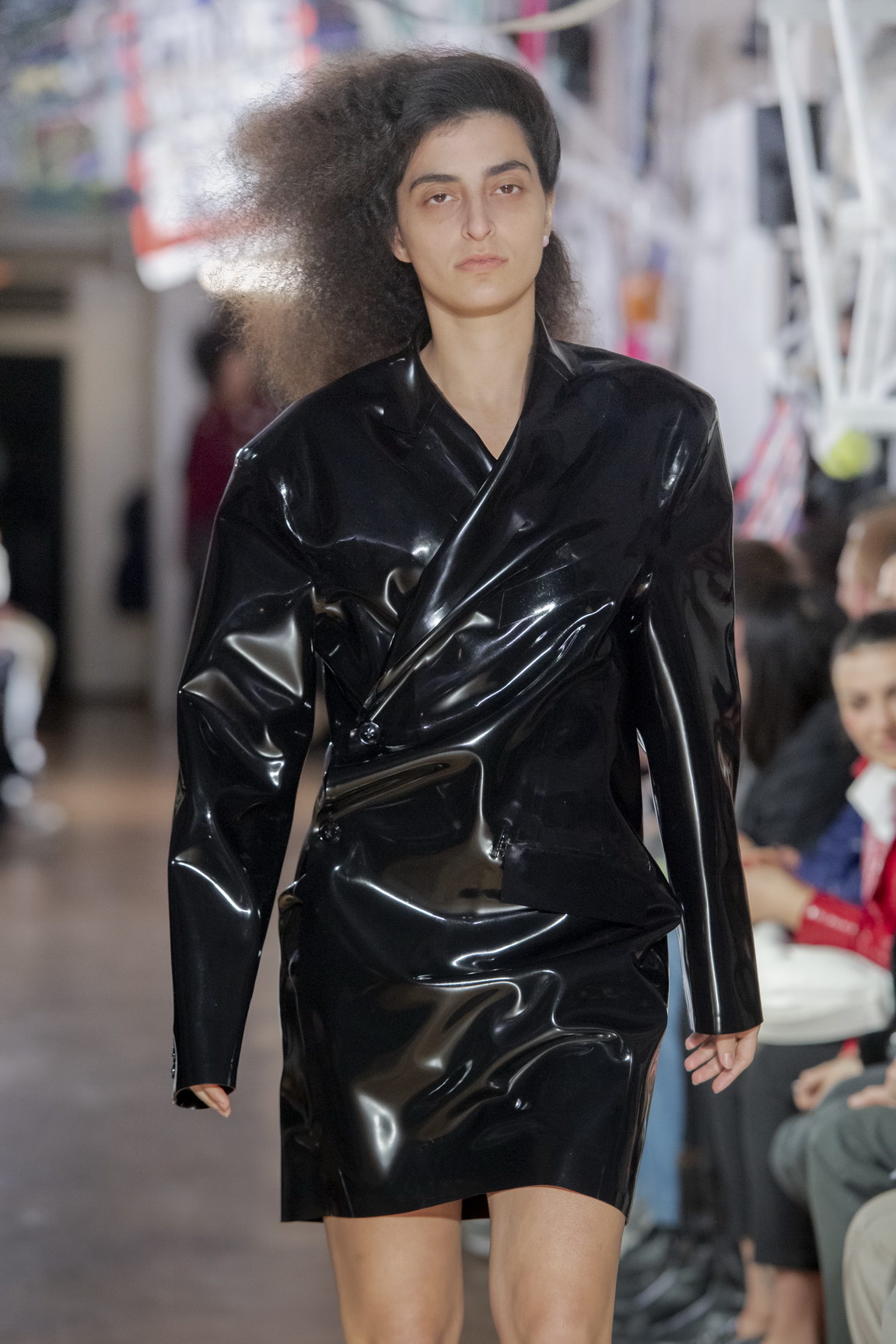
Though each designer’s approach to the decade’s turn may have differed, mutual ground was to be found in looking to and learning from the past when plotting how best to move forward. Referencing is, of course, essential to how fashion works, but for AW20, this collective turn to the past felt like a reaction to the uncertainty that’s become such a fundamental part of how we live today. Against a backdrop of instability, London’s designers seem to have taken solace in the unshakeable permanence of the past — which is just what makes it the perfect bedrock on which to build a lasting future.
Credits
Photography Mitchell Sams

